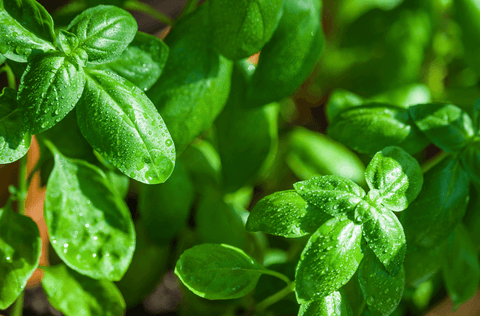When it comes to what’s most important — we’ve made that part easy! With beds that are strong, easy to assemble, and safe, all you have to do is decide which one!
To make the process easier, we’ve compiled a list of considerations that can help you make a decision/with decision-making you’ll be happy with for years to come.
1. Assess your available space
If you have a large garden area, you may want to consider multiple garden beds to create a visually appealing space. (Check out our community gallery for some garden design inspiration.)
Our Harvest beds are great for planting a variety of crops in one bed, ideal for gardeners looking to start their own vegetable farm. If you have the space to have your own produce aisle in your backyard, why not!
For smaller gardens or space (even condo balconies!) our smaller options like our Oasis or Discover can fit the bill, giving you the ability to create your own mini flower or vegetable garden even without a lot of space.
Space is about more than the actual footprint — our beds are available in various heights to let you create your own aesthetic depending on the space you’ll be planting in. For example, lower garden beds can contribute to a more open feel.
Product snapshot/footprint overview:
- Oasis — Up to 48" long, up to 48" wide
- Oasis+ — Up to 60" long, up to 60" wide
- Discover — Up to 60" long, up to 36" wide
- Harvest Mini — Up to 84" long, up to 36" wide
- Harvest — Up to 120” long, up to 48” wide
- Bloom — Totally customizable! The length of your lumber will determine the footprint of your garden bed.
2. Think about height
The height of your garden bed can have an impact both on its ease of use for you and for the design of your garden. Here's some food for thought:
Accessibility
You may want to consider taller options if you have difficulty bending or kneeling, as a taller bed will provide better accessibility and reduce strain on your back and knees. In fact, that’s one of the biggest benefits of raised bed gardening, because you don’t have to get near the ground to tend to your garden.
Taller beds are also helpful for people with physical disabilities or limited mobility, as they allow for gardening from a seated position or while standing.
Aesthetics
Lower beds
Lower beds contribute to a more open and spacious feel, and can make your garden appear larger than it actually is. If you want to maintain an unobstructed view of your plants and other landscaping elements, this is the way to go.
A lower garden creates a more natural and organic feel and blend seamlessly with the surrounding foliage, reminiscent of the way plants grow naturally.
Higher beds
Higher beds, on the other hand, can be used to make a statement, creating a focal point and drawing the eye upward. They’re a great way to add interest and depth to your garden design.
They can also help your garden look more organized and tidy, adding a sense of structure. A taller bed is eye-catching and can tie all of your plants and landscaping elements together.
A combination?
A combination with varying heights creates interest and contrast, and is a great opportunity to have your personal style reflected in your garden space. A multi-level garden lets you get creative with your space design, and the end result looks curated and intentional, and can replicate the feeling of a cozy retreat — your own zen space.
By using a variety in your garden space, you’re also able to layer different types of plants that may not grow well together in the same bed.
3. What's on your menu this season?
To thrive, different plants have varying needs. Some plants may need only a little space to flourish and can get along with other types of plants easily, whereas others may need more space beneath the soil to accommodate longer root systems and would not do well with lots of other plants in the same space.
For example, shallow-rooted plants like lettuce and herbs can be grown easily in lower beds, whereas deep-rooted vegetables like potatoes and carrots require taller beds.
Taking some time to think about what you want to grow in your garden beds or what kind of garden you want to create will help you choose the garden bed that can create the right environment for them to thrive.


